This article explains creating a bootable USB flash drive to install or reinstall Windows 11 on a new computer.
The vast majority of users will do an in-place upgrade to Windows 11. This means they will upgrade from a Windows 10 PC to Windows 11.
Some users will want to perform a clean install of Windows 11. Sometimes, upgrading a computer might bring other issues from Windows 10, and doing a clean install is one way to ensure you’re starting over.
Microsoft has released a tool (Media Creation Tool) to help you create a bootable CD/DVD or USB flash drive to install Windows 11.
If you want to perform a reinstall or clean install of Windows 11 on a new or used PC, download the media creation tool to make a bootable USB or DVD.
How to use the Windows Media Creation Tool
When you’re ready to install Windows 11, use the steps below to create a bootable USB or CD/DVD from which to install.
First, download the media-creating tool on an existing computer. You can download it using the link below.
Download Windows Media Creation Tool
- After downloading, run the media creation tool. It would be best if you were an administrator to run this tool.
- If you agree to the license terms, select Accept.
- On the ”What do you want to do?“ page, select Create installation media for another PC, then choose Next.
- Select the language, edition, and architecture (64-bit) for Windows 11.
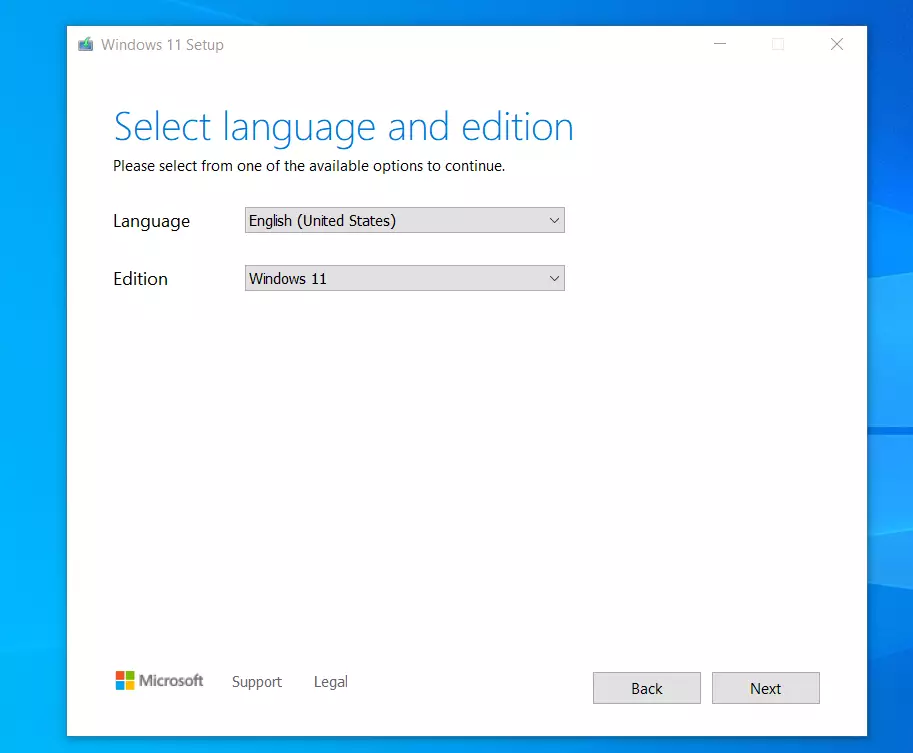
- Select which media you want to use:
- USB flash drive: Attach a blank USB flash drive with at least 8GB of space. Any content on the flash drive will be deleted.
- ISO file: Save an ISO file to your PC. This can be used to create a bootable DVD. After downloading the file, you can go to the location where the file is saved, or select Open DVD burner, and follow the instructions to burn the file to a DVD.
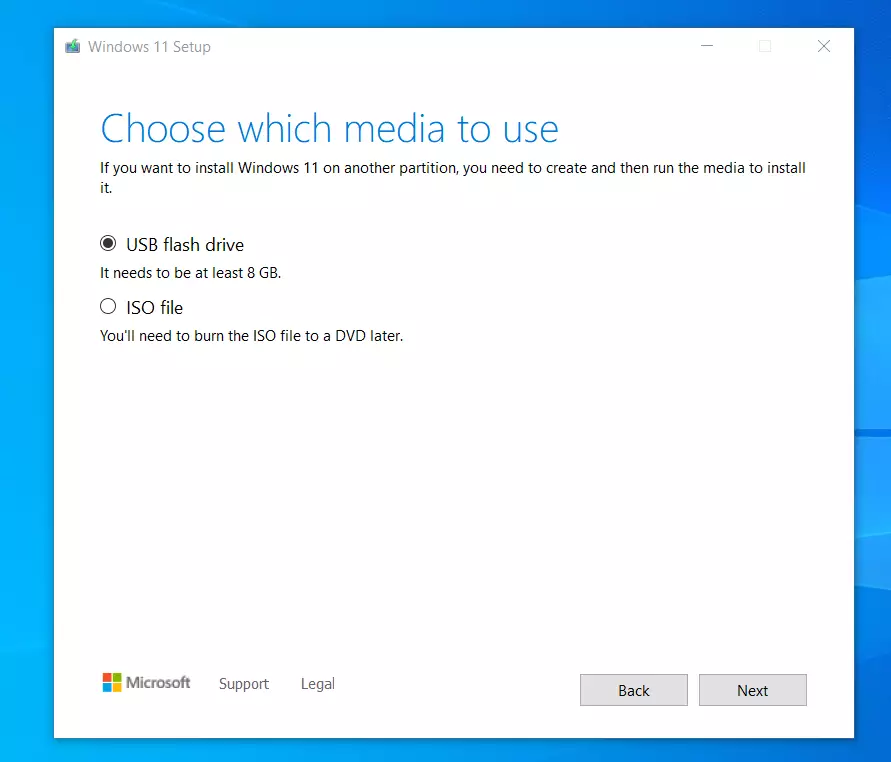
On the next screen, select the USB flash drive you want to boot Windows 11.
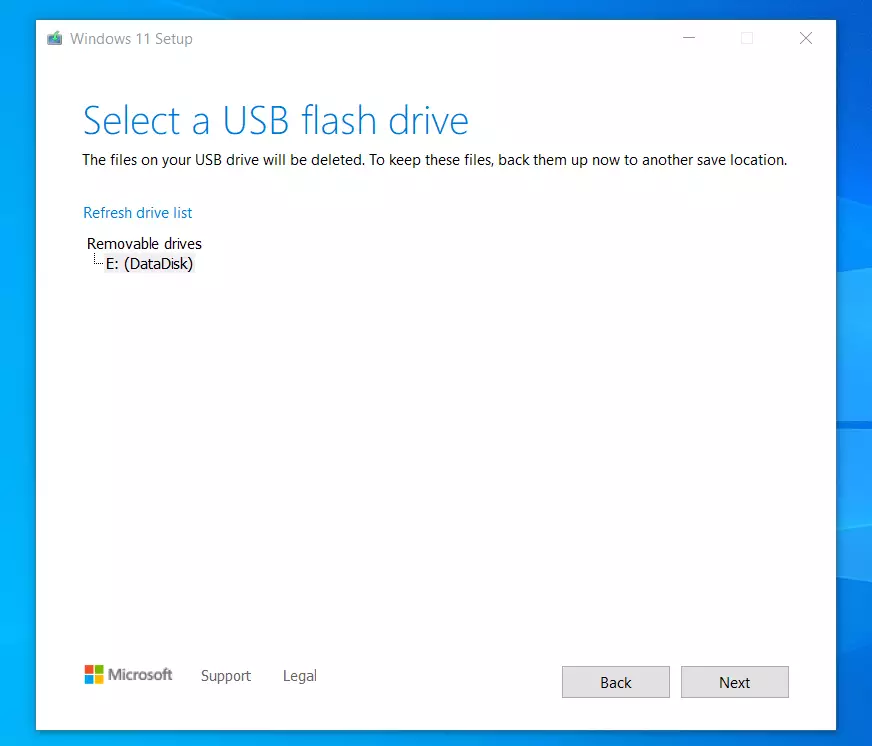
When you click Next, the tool should begin downloading Windows 11 onto the USB flash drive to boot from.
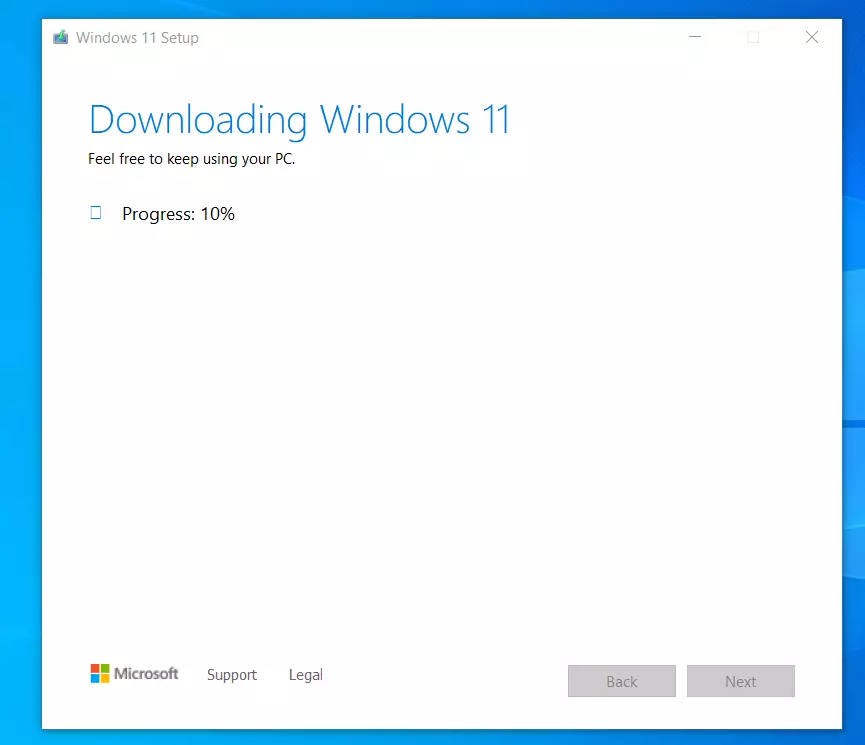
Wait until the download is complete.
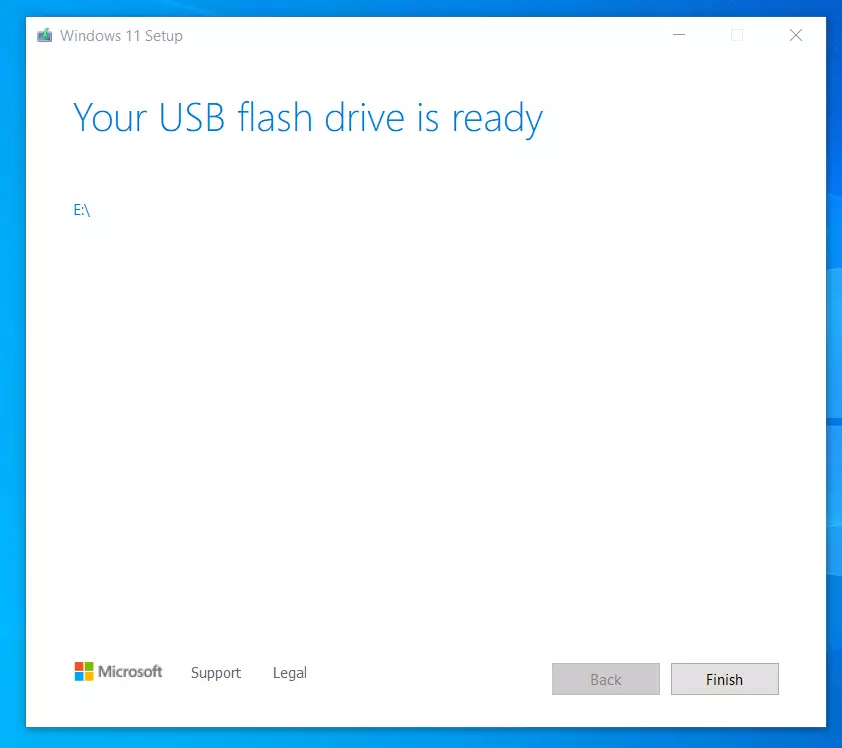
Then, take the USB flash drive to the computer where you want to install Windows 11.
How to boot the computer from a USB flash drive
- Attach the USB flash drive or insert the DVD into the PC where you want to install Windows 11.
- Restart your PC.
- If your PC does not automatically boot to the USB or DVD media, you might have to open a boot menu or change the boot order in your PC’s BIOS or UEFI settings.
- To open a boot menu or change the boot order, you’ll typically need to press a key (such as F2, F12, Delete, or Esc) immediately after you turn on your PC. You may need to reference the computer manufacturer’s documents to access the boot menu.
- If you do not see the USB or DVD media device listed within the boot options, make sure your computer’s USB port is working, or change the port.
- If changing the boot menu or order doesn’t work, and your PC immediately boots into the OS you want to replace, it is possible that the PC had not fully shut down. To ensure it shuts down entirely, select the power button on the sign-in screen or the Start menu and select Shut down.
- Select your language, time, and keyboard preferences on the Install Windows page, then select Next.
- Select Install Windows.
Once installation is complete, remove the USB drive and log in to Windows 11.
That should do it!
Conclusion:
- Creating a bootable USB flash drive for Windows 11 is straightforward with the Media Creation Tool.
- A clean install can resolve issues arising from upgrading an older OS.
- Always ensure you have a blank USB drive with at least 8GB of space before proceeding.
- Follow the installation prompts carefully to ensure a successful setup.
- Adjust your BIOS or UEFI settings if your computer doesn’t boot from the USB or DVD.
- After installation, enjoy the new features and enhanced performance of Windows 11.

Leave a Reply